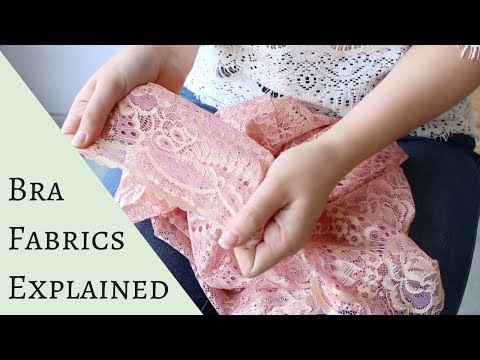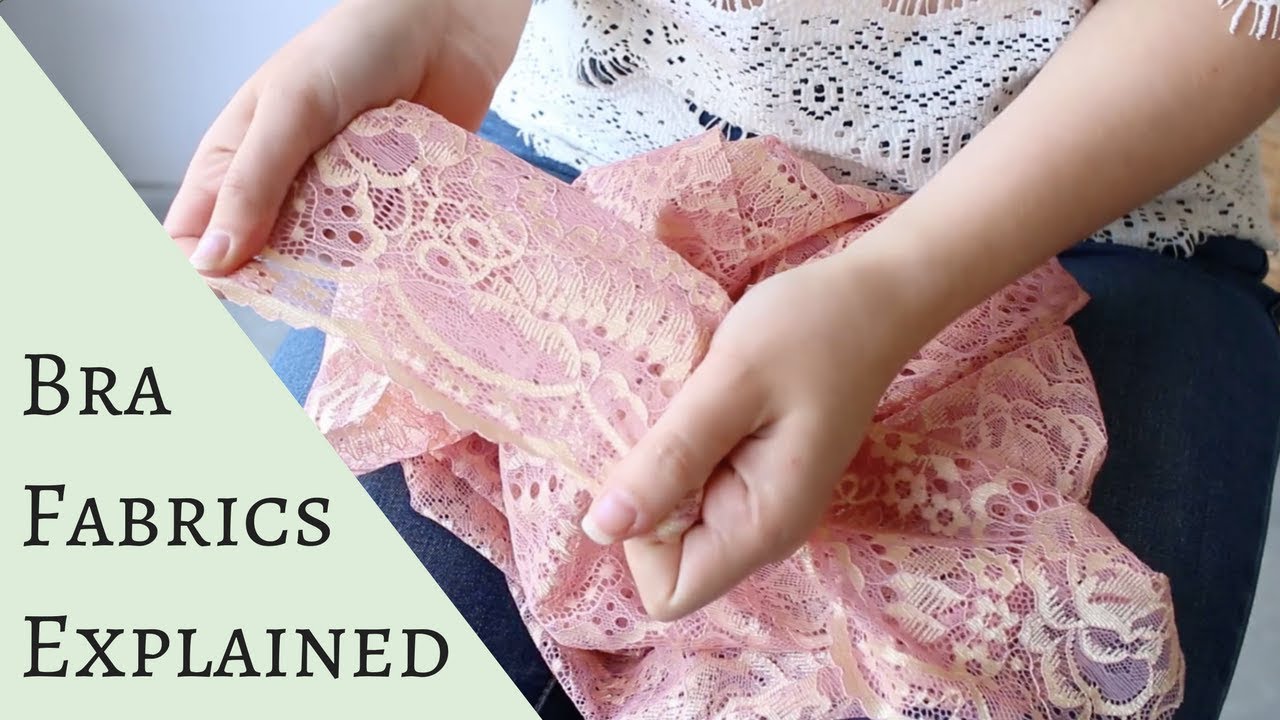Discover the Ultimate Comfort and Support with Our Revolutionary Bra Fabric! Are you tired of uncomfortable, scratchy undergarments that leave you feeling restricted and irritated? Look no further – our innovative bra fabric is here to revolutionize your lingerie collection. Crafted with meticulous attention to detail, our fabric is designed to provide unparalleled comfort and support. Experience a whole new level of luxurious softness as the fabric gently caresses your skin, ensuring an irritation-free fit that lasts all day long. Our fabric’s unique breathability guarantees optimal airflow, preventing sweat and unpleasant odors, so you can confidently conquer your daily activities. With its seamless construction, our fabric eliminates unsightly lines and bulges, giving you a smooth silhouette that enhances your natural curves. Its stretchability and flexibility adapt to your body’s movements, ensuring unrestricted freedom and a perfect fit. Whether you’re running errands or attending a special event, our bra fabric provides the ultimate combination of style and comfort. Say goodbye to discomfort and hello to a whole new world of luxurious support and confidence. Upgrade your lingerie drawer today and experience the difference our exceptional fabric makes!

The Importance of Bra Fabric: Choosing the Right Material for Optimal Comfort and Support
When it comes to selecting the perfect bra, we often focus on factors such as size, style, and design. However, one crucial element that is often overlooked is the fabric. The fabric of a bra plays a significant role in providing both comfort and support, making it essential to understand the different types of materials available. In this article, we will explore the importance of bra fabric and provide valuable insights to help you make an informed decision when purchasing your next bra.
The Role of Fabric in Bra Comfort
Comfort is paramount when it comes to wearing a bra for long hours. The fabric of your bra determines how it feels against your skin and how well it adapts to your body’s movements. The right fabric can enhance your overall comfort level, preventing irritation and discomfort. On the other hand, choosing the wrong material can lead to chafing, itching, and even pain.
Cotton: Known for its breathability and softness, cotton is a popular fabric choice for bras. It allows air to circulate, preventing excessive sweating and reducing the risk of skin irritation. Additionally, cotton bras are hypoallergenic, making them suitable for those with sensitive skin. However, cotton bras may lack the necessary support for larger busts.
Synthetic Materials: Fabrics such as polyester, nylon, and spandex are commonly used in bras due to their durability and stretchability. These materials offer excellent support and shape retention, ensuring that your bra maintains its fit over time. Synthetic bras also tend to be more affordable than those made from natural fibers. However, they may not be as breathable as cotton, leading to potential discomfort in hot weather or during physical activities.
Lace: Lace bras are a popular choice for their aesthetic appeal and delicate feel. Lace adds a touch of femininity to any bra, making it a favorite among many women. However, it is important to note that lace bras are usually not as supportive as those made from other materials. They are better suited for smaller busts or occasions that do not require high levels of support.
The Impact of Fabric on Bra Support
Support is crucial, especially for those with larger busts. The fabric of your bra directly influences its ability to provide the necessary support and lift. It is essential to choose a fabric that offers both comfort and the right level of support for your needs.
Underwire Bras: Underwire bras are designed to provide maximum support and lift. The fabric used in underwire bras plays a vital role in maintaining their structure and ensuring proper support. Typically, underwire bras feature a combination of synthetic materials and nylon/spandex blends to provide a balance between support and comfort.
Mesh: Mesh fabric is often found in sports bras or bras designed for high-impact activities. This material is known for its breathability and moisture-wicking properties, making it ideal for workouts. Mesh bras offer excellent support while keeping you cool and dry during intense physical activities.
Satin or Silk: Satin and silk bras are luxurious options that offer both support and comfort. These fabrics provide a smooth and soft feel against the skin while offering excellent support. However, satin and silk bras may require special care and are generally more expensive than other fabric options.
Choosing the Right Fabric for Different Occasions
Another important aspect to consider when choosing bra fabric is the occasion or activity for which you plan to wear it. Different fabrics offer varying levels of support and comfort, making them more suitable for specific occasions.
Everyday Bras: Bras that are meant for everyday wear should prioritize comfort. Cotton bras or those made from breathable synthetic materials are ideal for daily activities, as they provide a balance between comfort and support. Look for bras with wide, adjustable straps and a comfortable band to ensure all-day comfort.
Sports Bras: When it comes to sports bras, support and moisture-wicking properties are key. Mesh or synthetic materials are often used in sports bras to keep you cool and dry during workouts. Additionally, look for bras with a compression fit to minimize movement and provide optimal support.
Special Occasion Bras: For special occasions where aesthetics take precedence over support, lace or satin bras are popular choices. These fabrics offer a luxurious and feminine feel, perfect for enhancing your outfit. However, it is essential to consider the level of support required for the occasion and choose a bra accordingly.
Caring for Your Bras: Maintenance and Washing Tips
Proper care and maintenance are essential to ensure the longevity and performance of your bras. The fabric of your bra can be delicate, requiring specific washing techniques to maintain its structure and support.
Hand Washing: Hand washing is generally recommended for bras to prevent damage to the fabric and maintain their shape. Fill a basin with lukewarm water and a mild detergent, then gently agitate the bras in the water. Rinse thoroughly and squeeze out excess water before laying them flat to dry.
Machine Washing: If machine washing is unavoidable, use a lingerie bag to protect your bras and prevent them from getting tangled or stretched. Fasten all hooks and clasps, and choose a gentle cycle with cold water. Avoid using harsh detergents or bleach, as they can damage the fabric.
Storage: Proper storage is crucial to maintain the shape and support of your bras. Avoid folding them in half or cramming them into tight spaces. Instead, stack them neatly or hang them using a bra-specific hanger or a clothesline with individual clips.
In conclusion, the fabric of your bra plays a significant role in providing the comfort and support you need. Understanding the different types of fabrics available and their specific characteristics can help you make an informed decision when purchasing your next bra. Whether it is cotton for everyday wear, mesh for workouts, or lace for special occasions, choosing the right fabric will ensure optimal comfort, support, and longevity for your bras.
“Unveiling the Secrets: The Ultimate Guide to Bra-Making Fabrics”
Video Source : Emerald Erin Sews
List of Bra Fabrics
Bra Fabric Comparison
| Fabric Type | Description | Advantages | Disadvantages |
|---|---|---|---|
| Lace | Lace fabric is intricately woven with delicate patterns, often featuring floral motifs. It is commonly used as an overlay on cups and straps. | – Provides an alluring and feminine aesthetic.n – Offers breathability and comfort due to its open weave.n – Adds a touch of elegance to lingerie. |
– May lack sufficient support for larger busts.n – Can be prone to snagging and fraying with improper care. |
| Cotton | Cotton fabric is widely used in bras due to its natural fibers, softness, and hypoallergenic properties. It is often found in everyday bras for its comfort. | – Gentle on the skin, suitable for sensitive individuals.n – Breathable and absorbs moisture, reducing sweat buildup.n – Durable and easy to care for. |
– May lack shaping and support compared to other fabrics.n – Can stretch over time, compromising the bra’s fit. |
| Satin | Satin fabric is made from silk, polyester, or a blend of both. It has a smooth, glossy finish and is commonly used in luxury and special occasion lingerie. | – Provides a luxurious feel against the skin.n – Offers a sleek, shiny appearance.n – Enhances the overall aesthetic of lingerie. |
– Less breathable compared to other fabrics.n – May require delicate care and attention to maintain its luster. |
| Mesh | Mesh fabric is a lightweight, breathable material often used in bra construction. It features small, evenly spaced holes, allowing for ventilation and moisture-wicking properties. | – Promotes air circulation, keeping the wearer cool and dry.n – Provides a modern and sporty look.n – Offers excellent support and flexibility. |
– May not suit individuals seeking maximum coverage or modesty.n – Can be prone to snags or tears if not handled with care. |
As an expert in lingerie, it is essential to understand the different fabric options available in bras. Each fabric type has its unique characteristics, advantages, and disadvantages. By considering these factors, individuals can make informed decisions when selecting their ideal bra.

